1. Overview
Emmeline Pankhurst (born Emmeline Goulden; 15 July 1858 - 14 June 1928) was a prominent British political activist who spearheaded the suffragette movement, playing a pivotal role in securing women's right to vote in the United Kingdom. She founded and led the Women's Social and Political Union (WSPU) in 1903, an organization known for its militant tactics and motto, "Deeds, not words." Her contributions were recognized in 1999 when Time named her one of the Time 100: The Most Important People of the 20th Century, acknowledging that she "shaped an idea of objects for our time" and "shook society into a new pattern from which there could be no going back." While widely criticized for her radical methods, including property damage and hunger strikes, and despite ongoing historical debate regarding their effectiveness, her work is recognized as a crucial element in achieving women's suffrage in the United Kingdom. She died only weeks before the Representation of the People (Equal Franchise) Act 1928 granted equal voting rights to all women over 21.
2. Early Life and Background
Emmeline Pankhurst was born Emmeline Goulden on 15 July 1858, in the Moss Side district of Manchester, England. Although her birth certificate indicates this date, she believed and later claimed her birthday was a day earlier, on Bastille Day (14 July), feeling a kinship with the female revolutionaries who stormed the Bastille. This claim is often repeated in biographies, including those by her daughters. Her family had a long history of political activism, deeply influencing her upbringing and early political awareness.
2.1. Childhood and Education
Pankhurst's mother, Sophia Goulden, was a Manx woman from the Isle of Man, descended from men who faced charges for social unrest and slander. The Isle of Man notably became the first place in the British Isles to grant women the right to vote in national elections in 1881. Her father, Robert Goulden, was a self-made manufacturer from Manchester, whose family also had a background in political activity; his mother worked with the Anti-Corn Law League, and his father was present at the Peterloo massacre, a significant event where cavalry charged a crowd demanding parliamentary reform.
The Gouldens had ten children, with Emmeline being the eldest of five daughters. Soon after her birth, the family moved to Seedley, where her father co-founded a small business and was active in local politics, serving on the Salford town council. Robert Goulden was also an enthusiastic supporter of dramatic organizations and owned a theatre in Salford, where he performed in Shakespeare plays. Emmeline absorbed an appreciation for drama and theatrics from her father, skills she later utilized in her social activism.
The Gouldens actively involved their children in social causes. Robert welcomed American abolitionist Henry Ward Beecher to Manchester, and Sophia used Uncle Tom's Cabin by Beecher's sister, Harriet Beecher Stowe, as a regular bedtime story. Emmeline recalled visiting a bazaar at a young age to collect money for newly freed slaves in the United States.
Emmeline began reading at a very young age, reportedly by age three, and read the Odyssey at nine. She enjoyed works by John Bunyan, particularly The Pilgrim's Progress, and considered Thomas Carlyle's The French Revolution: A History a lifelong source of inspiration. Despite her avid reading, her education was not prioritized like her brothers'. Her parents believed girls should learn to "make home attractive" for potential husbands, expecting their daughters to marry young and avoid paid work. One evening, feigning sleep, Emmeline overheard her father lament, "What a pity she wasn't born a lad," highlighting the prevailing gender expectations.
Her parents' interest in women's suffrage first introduced Emmeline to the cause. Her mother read the Women's Suffrage Journal, and Emmeline admired its editor, Lydia Becker. At 14, she insisted on attending a public meeting where Becker was speaking, leaving "a conscious and confirmed suffragist." A year later, she attended the École Normale de Neuilly in Paris, which offered chemistry and bookkeeping alongside traditional feminine arts. Her roommate, Noémie, daughter of Victor Henri Rochefort, shared tales of their parents' political exploits. After graduating, Emmeline returned to Manchester, miserable after a French marriage offer was withdrawn because her father refused to provide a dowry.
3. Marriage and Family
In autumn 1878, at age 20, Emmeline Goulden met and began a relationship with Richard Pankhurst, a barrister 24 years her senior. Richard was a long-time advocate for women's suffrage, freedom of speech, and education reform. Despite their strong mutual affection, Richard had previously resolved to remain a bachelor to better serve the public. Emmeline initially suggested a free union to avoid legal formalities, but Richard objected, fearing it would exclude her from political life, citing the social condemnation faced by his colleague Elizabeth Clarke Wolstenholme Elmy. They married on 18 December 1879, at St Luke's Church, Pendleton. Richard Pankhurst was also the author of the Married Women's Property Acts, which allowed women to retain income or wealth acquired before and after marriage, underscoring his commitment to women's rights.
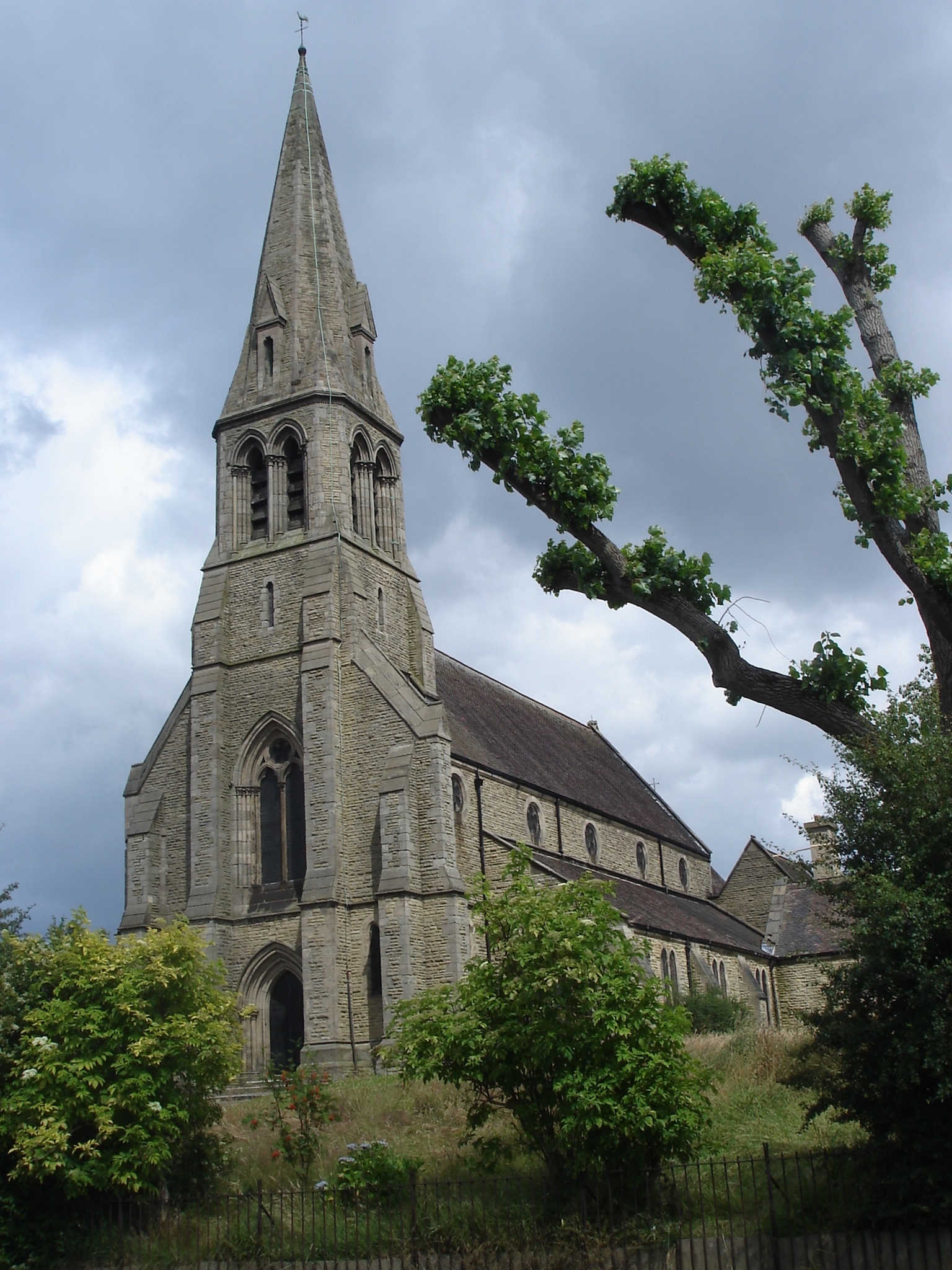
During the 1880s, Emmeline Pankhurst balanced family life with political activities. She gave birth to five children in ten years, including Christabel (1880), Estelle Sylvia (1882), Henry Francis Robert (Frank) (1884), Adela (1885), and Henry Francis (1889). Both Emmeline and Richard believed she should not be "a household machine," so a butler was hired to assist with the children, allowing Pankhurst to engage with the Women's Suffrage Society.
The family moved several times, residing in Seedley, then Drayton Terrace, Chorlton-on-Medlock, and eventually London, where Richard unsuccessfully ran for Parliament. In London, Pankhurst opened a small fabric shop, Emerson and Company, with her sister Mary Jane Clarke. In 1888, their son Frank died of diphtheria, a tragedy Pankhurst attributed to poor neighborhood sanitation. Overwhelmed with grief, she commissioned two portraits of him but could not bear to look at them. The family moved to the more affluent Russell Square district, and Emmeline, soon pregnant, declared the new child was "Frank coming again," naming him Henry Francis.
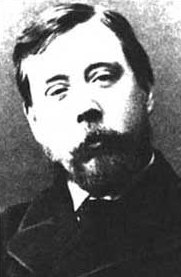
Their Russell Square home became a hub for political intellectuals and activists, including socialists, anarchists, suffragists, and free thinkers. Guests included Indian MP Dadabhai Naoroji, socialist activists Herbert Burrows and Annie Besant, and French anarchist Louise Michel. Emmeline took pleasure in decorating their home, especially with Asian furnishings, and dressing her family tastefully, believing that "Beauty and appropriateness in her dress and household appointments seemed to her at all times an indispensable setting to public work."
In 1898, Richard Pankhurst died suddenly from a gastric ulcer. Emmeline, who had been visiting her friend Noémie in Switzerland with Christabel, received a telegram from Richard saying, "I am not well. Please come home, my love." She returned immediately, only to learn of his death from a newspaper on the train. Richard's death left Emmeline with significant debt and new responsibilities. She moved the family to a smaller house at 62 Nelson Street, resigned from the Board of Guardians, and took a paid position as Registrar of Births and Deaths in Chorlton. This work provided her with deeper insight into the harsh conditions faced by women, particularly regarding illegitimacy and poverty, reinforcing her conviction that women needed the vote to improve their lives. In 1900, she was elected to the Manchester School Board and re-opened her fabric store to supplement the family's income.
The Pankhurst children began to forge their own identities around this time, all eventually becoming involved in the suffrage struggle. Christabel, often considered her mother's favorite, became deeply involved after befriending suffrage activists Esther Roper and Eva Gore-Booth. Sylvia, an artist, received a scholarship to the Manchester School of Art and studied in Florence and Venice. The younger children, Adela and Harry, faced challenges; Adela was sent to a boarding school where she contracted head lice, and Harry struggled with measles and vision problems.
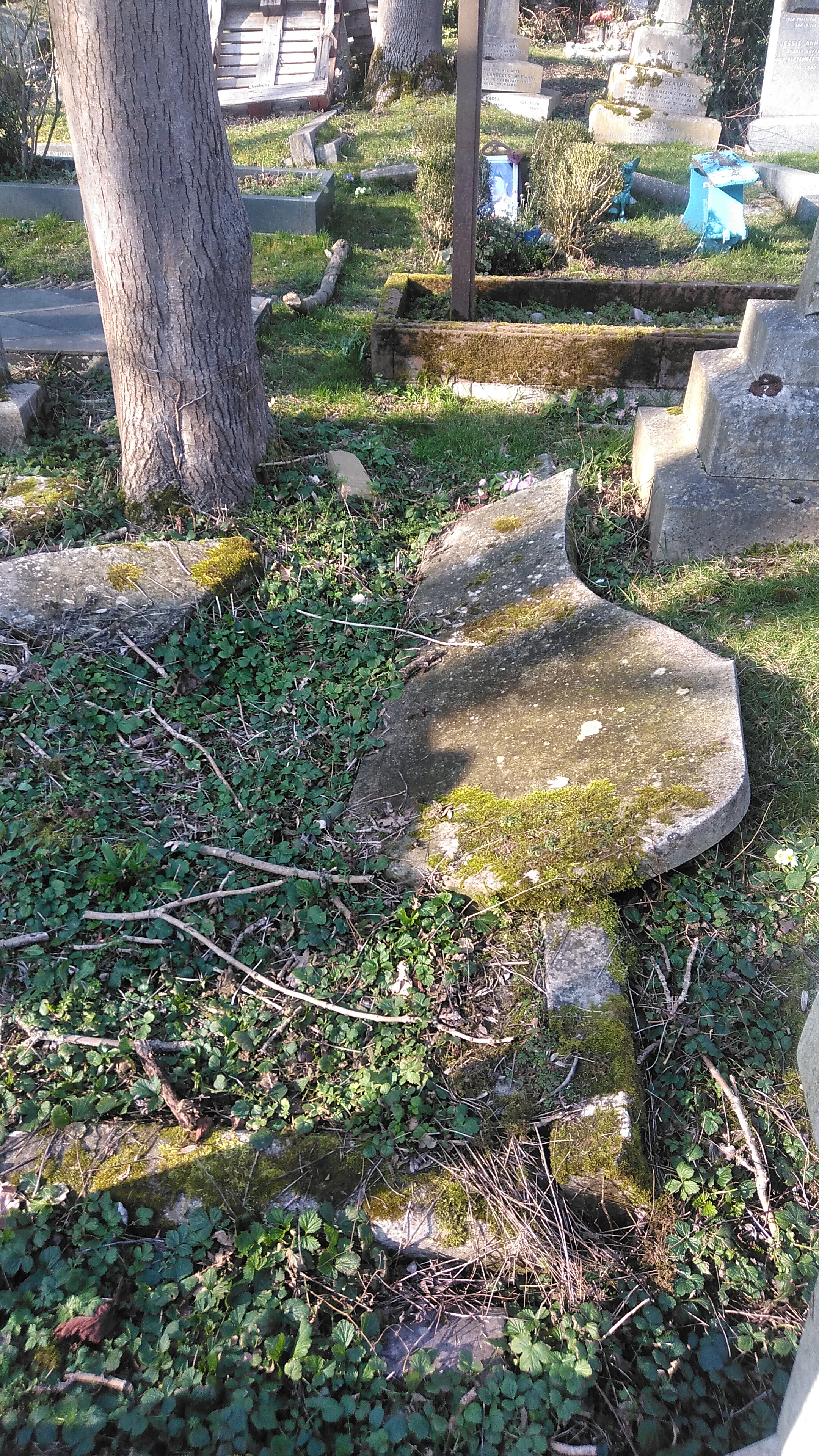
4. Early Political Activities
Prior to establishing the WSPU, Emmeline Pankhurst engaged in several political and social reform movements, distinguishing herself as an activist in her own right.
4.1. Women's Franchise League
In 1888, the National Society for Women's Suffrage (NSWS), Britain's first nationwide coalition for women's voting rights, split over whether to accept organizations affiliated with political parties. Pankhurst aligned with the "new rules" group, the Parliament Street Society (PSS). However, when the PSS showed reluctance to advocate for married women's suffrage, Pankhurst and her husband helped organize the Women's Franchise League (WFL).
The WFL's inaugural meeting was held on 25 July 1889, at the Pankhurst home in Russell Square. Early members included Josephine Butler, Elizabeth Clarke Wolstenholme-Elmy, and Harriot Eaton Stanton Blatch, daughter of US suffragist Elizabeth Cady Stanton. The WFL was considered radical, supporting not only women's suffrage but also equal rights for women in divorce and inheritance, and advocating trade unionism with alliances to socialist organizations. This radicalism led to criticism from more conservative groups, who called them the "extreme left," and caused some members, including Blatch and Elmy, to resign. The WFL, in turn, ridiculed the "Spinster Suffrage party," insisting on a broader assault on social inequity. The organization ultimately dissolved after one year.
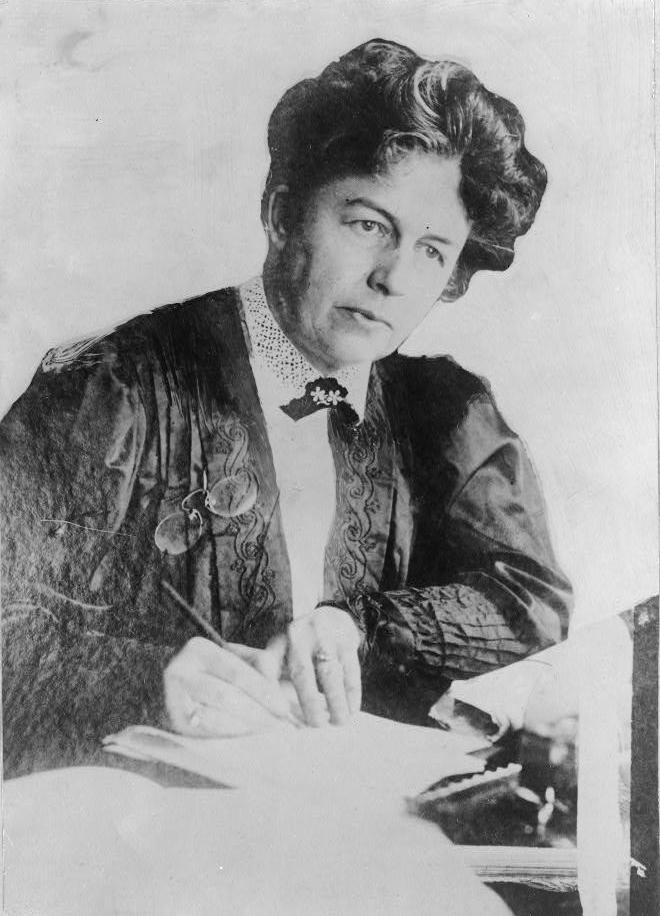
4.2. Independent Labour Party
After the WFL dissolved, Pankhurst's shop in London struggled, and the family faced financial difficulties. In 1893, they closed the store and returned to Manchester, eventually settling in Victoria Park. The girls enrolled in Manchester Girls' High School, though they found its large student population and strict schedule confining.
Pankhurst began working with several political organizations, emerging as a respected activist. She initially joined the Women's Liberal Federation (WLF), an auxiliary of the Liberal Party, but quickly became disillusioned with its moderate positions, particularly its unwillingness to support Irish Home Rule and its aristocratic leadership. She also briefly joined the Fabian Society.
In 1888, Pankhurst had befriended Keir Hardie, a Scottish socialist who was elected to Parliament in 1891 and co-founded the Independent Labour Party (ILP) in 1893. Excited by the ILP's commitment to a range of social issues, Pankhurst resigned from the WLF and applied to join the ILP. Although the local branch initially refused her admission due to her sex, she eventually joined the ILP nationally. Her daughter Christabel later wrote of her mother's enthusiasm, stating that in the ILP, "she hoped there might be the means of righting every political and social wrong."
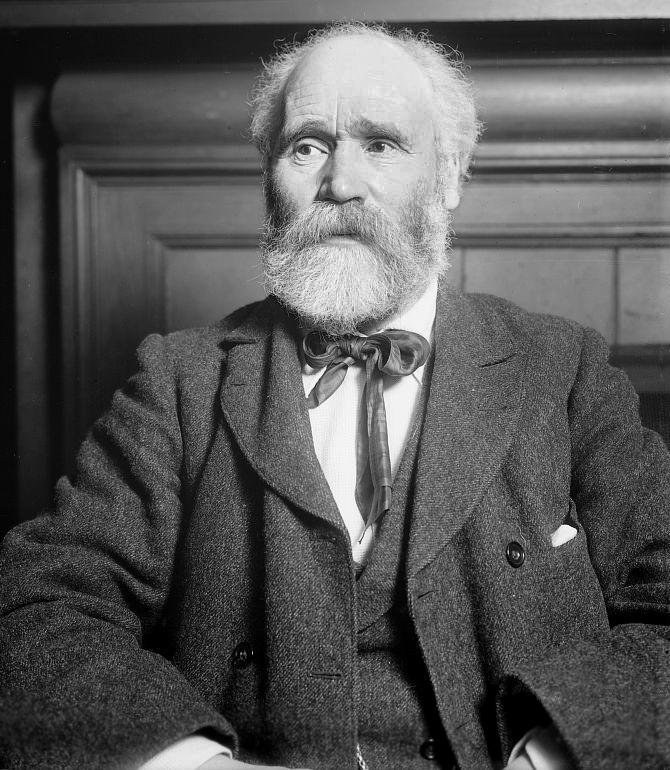
4.3. Poor Law Guardian
One of Pankhurst's first activities with the ILP was distributing food to the poor through the Committee for the Relief of the Unemployed. In December 1894, she was elected as a Poor Law Guardian in Chorlton-on-Medlock. She was appalled by the conditions she witnessed firsthand in the Manchester workhouse, recalling:
"The first time I went into the place I was horrified to see little girls seven and eight years old on their knees scrubbing the cold stones of the long corridors... bronchitis was epidemic among them most of the time... I found that there were pregnant women in that workhouse, scrubbing floors, doing the hardest kind of work, almost until their babies came into the world... Of course the babies are very badly protected... These poor, unprotected mothers and their babies I am sure were potent factors in my education as a militant."
Pankhurst immediately worked to change these conditions, establishing herself as a successful voice for reform on the Board of Guardians.
In 1896, Pankhurst faced legal trouble when she and two men violated a court order against ILP meetings at Boggart Hole Clough. With Richard serving as their legal counsel, they refused to pay fines, and the two men were imprisoned. Pankhurst was never ordered to serve a sentence, possibly due to fears of public backlash against imprisoning such a respected woman. When asked if she was prepared for prison, she replied, "Oh, yes, quite. It wouldn't be so very dreadful, you know, and it would be a valuable experience." Though ILP meetings were eventually permitted, the episode strained Pankhurst's health and family income.
5. Women's Social and Political Union (WSPU)
By 1903, Emmeline Pankhurst had grown disillusioned with the lack of progress on women's suffrage through moderate speeches and parliamentary promises. Suffrage bills in 1870, 1886, and 1897 had all been defeated. She doubted that political parties, with their diverse agendas, would ever prioritize women's suffrage. She even broke with the ILP when it refused to focus on "Votes for Women." Believing that patient tactics had failed, she concluded that more militant actions were necessary.
5.1. Founding and Principles
On 10 October 1903, Pankhurst and several colleagues founded the Women's Social and Political Union (WSPU) at her home on 62 Nelson Street, Manchester. The organization was open exclusively to women and dedicated to direct action to win the vote. Its core motto was "Deeds, not words." The WSPU identified itself as independent from, and often in opposition to, existing political parties, which it believed were too distracted by other issues to prioritize women's suffrage.
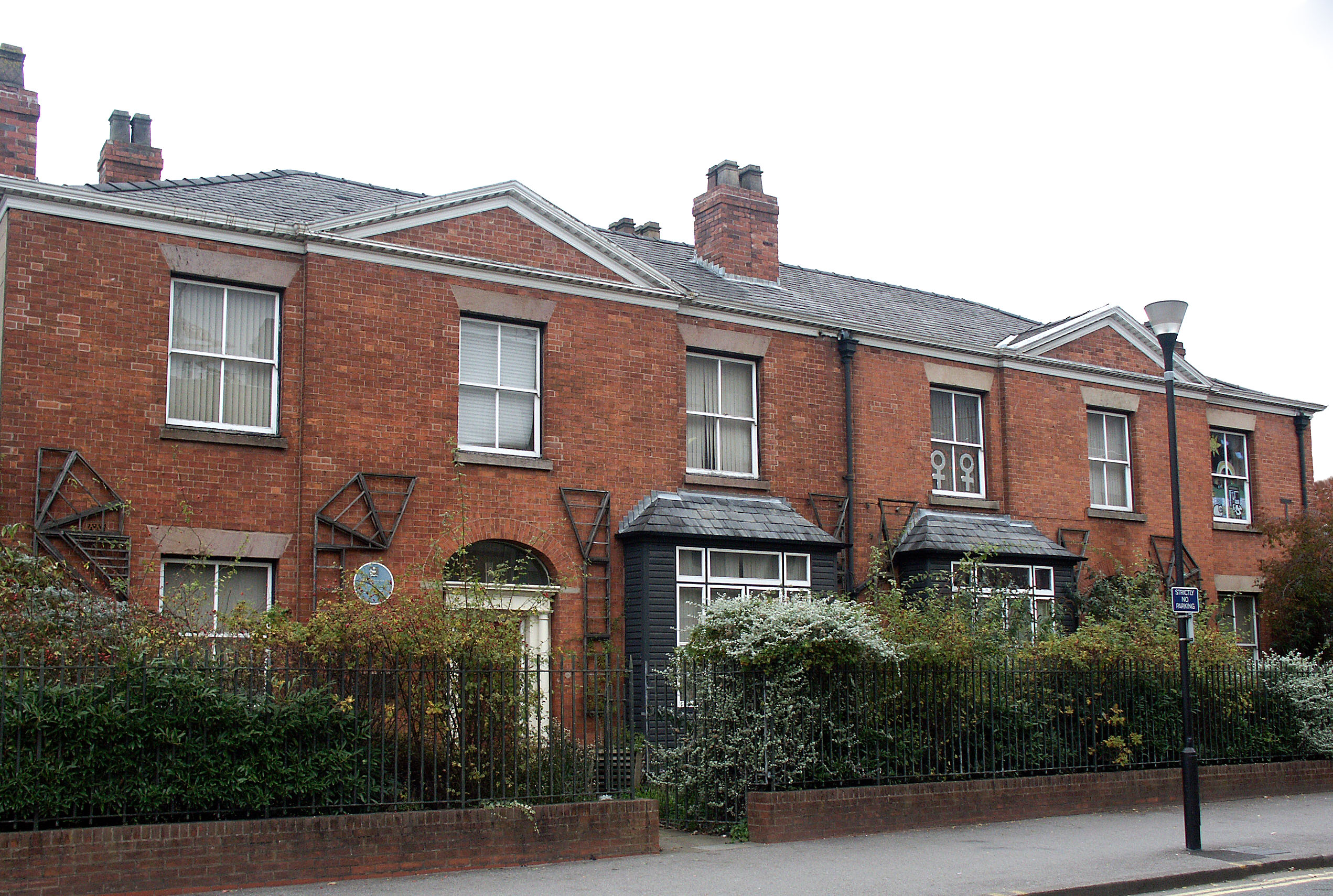
5.2. Militant Tactics and Protests
The WSPU's early militancy initially took non-violent forms, including speeches, petitions, rallies, and publishing a newsletter called Votes for Women. They also convened "Women's Parliaments" to coincide with official government sessions. When a bill for women's suffrage was filibustered on 12 May 1905, Pankhurst and other WSPU members staged a loud protest outside the Parliament building. Police forcibly removed them, but they regrouped, demanding the bill's passage. Although the bill was not revived, Pankhurst considered the demonstration a success in capturing attention. By 1906, she declared, "We are at last recognized as a political party; we are now in the swim of politics, and are a political force."
The WSPU's exclusive focus on women's suffrage was a hallmark of its militancy. They refused to work with political parties that did not prioritize their cause and protested against all candidates of the ruling government if it refused to pass suffrage legislation. This led to conflicts with Liberal Party organizers, even those who supported women's suffrage, such as future Prime Minister Winston Churchill, whose defeat in a by-election was partly attributed to the WSPU. Members were sometimes heckled and attacked for "spoiling" elections. On 18 January 1908, Pankhurst and Nellie Martel were assaulted by Liberal supporters, suffering bruises and injuries. Similar tensions later arose with the Labour Party.
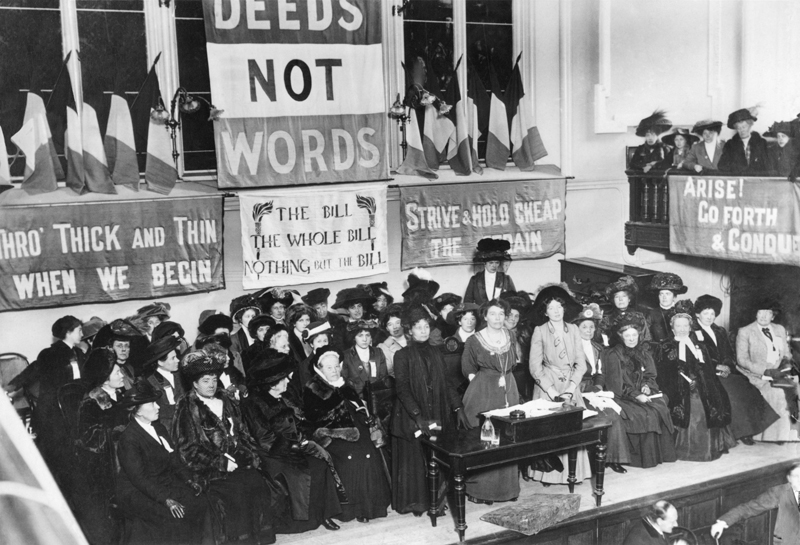
Pankhurst was first arrested in February 1908 for attempting to enter Parliament to deliver a protest resolution to Prime Minister H. H. Asquith. She was charged with obstruction and sentenced to six weeks in prison. She publicly condemned her confinement conditions, including vermin, meager food, and the "civilised torture of solitary confinement and absolute silence." Pankhurst viewed imprisonment as a means to publicize the urgency of women's suffrage. In June 1909, she struck a police officer twice to ensure her arrest. She was arrested seven times before women's suffrage was approved. During her trial on 21 October 1908, she famously declared, "We are here not because we are law-breakers; we are here in our efforts to become law-makers."
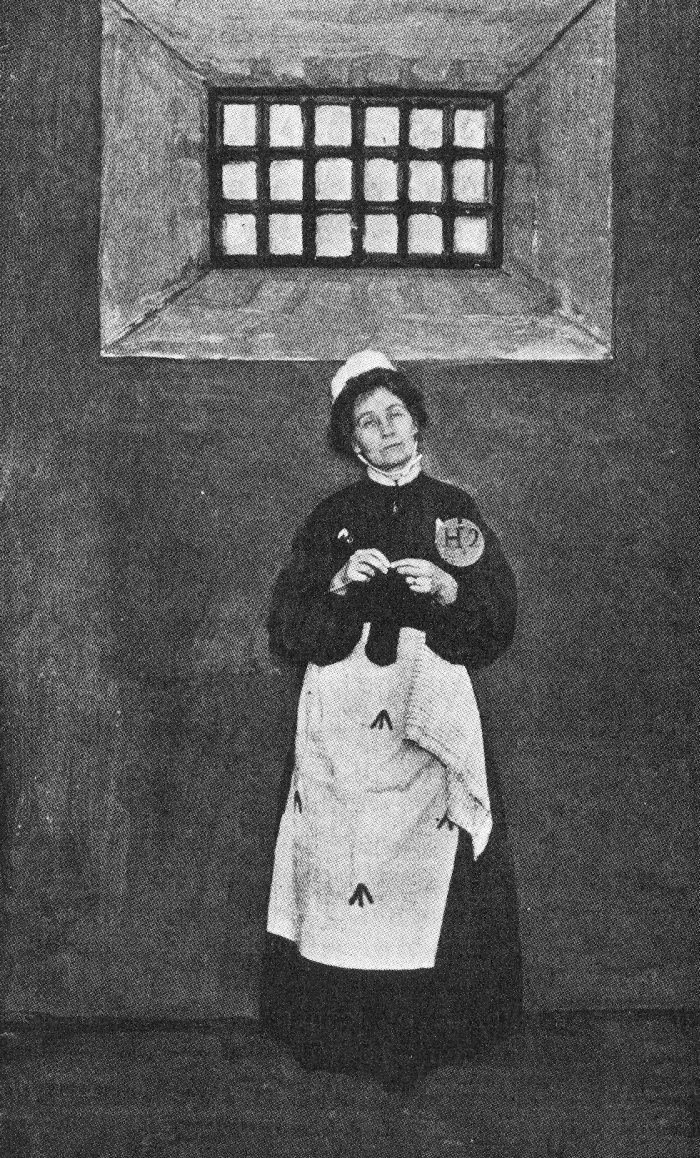
As the WSPU gained notoriety, Pankhurst resisted efforts to democratize the organization. In 1907, a group led by Teresa Billington-Greig called for more rank-and-file involvement. In response, Pankhurst voided parts of the WSPU's constitution and cancelled annual meetings, insisting on a small, chosen committee to coordinate activities. This led to the departure of several members, including Billington-Greig and Charlotte Despard, who formed the Women's Freedom League. In her 1914 autobiography, Pankhurst defended the WSPU's autocratic structure, stating:
"if at any time a member, or a group of members, loses faith in our policy; if any one begins to suggest that some other policy ought to be substituted, or if she tries to confuse the issue by adding other policies, she ceases at once to be a member. Autocratic? Quite so. But, you may object, a suffrage organisation ought to be democratic. Well the members of the W.S.P.U. do not agree with you. We do not believe in the effectiveness of the ordinary suffrage organisation. The W.S.P.U. is not hampered by a complexity of rules. We have no constitution and by-laws; nothing to be amended or tinkered with or quarrelled over at an annual meeting... The W.S.P.U. is simply a suffrage army in the field."
5.3. Tactical Intensification and Internal Divisions
On 21 June 1908, 500,000 activists gathered in Hyde Park for "Women's Sunday," a massive but peaceful demonstration for women's suffrage. Prime Minister Asquith and leading MPs responded with indifference. This intransigence, coupled with abusive police activity, prompted some WSPU members to escalate their actions. Soon after, Edith New and Mary Leigh threw rocks at the windows of 10 Downing Street. Though they claimed independence from the WSPU command, Pankhurst approved of their action, reminding the court of historical instances where male agitators had broken windows to win rights.
In 1909, the hunger strike became a WSPU tactic. Marion Wallace Dunlop was arrested for writing an excerpt from the Bill of Rights on a wall in the House of Commons. Her hunger strike proved effective, leading other imprisoned suffragettes to follow suit. Prison authorities frequently force-fed the women using painful methods, which drew condemnation from suffragists and medical professionals. Pankhurst herself described the trauma of force-feeding in Holloway Prison as "horror and torment," with "sickening scenes of violence." When officials tried to force-feed her, she famously raised a clay jug, declaring, "If any of you dares so much as to take one step inside this cell I shall defend myself." She was spared further force-feeding attempts but continued to violate the law and starve herself in protest. The Asquith government later enacted the Cat and Mouse Act, allowing temporary release for hunger-striking suffragettes to recover, only to re-arrest them. Pankhurst tried to evade police harassment with disguises, and the WSPU formed a jujutsu-trained female bodyguard squad to protect her, leading to violent scuffles.
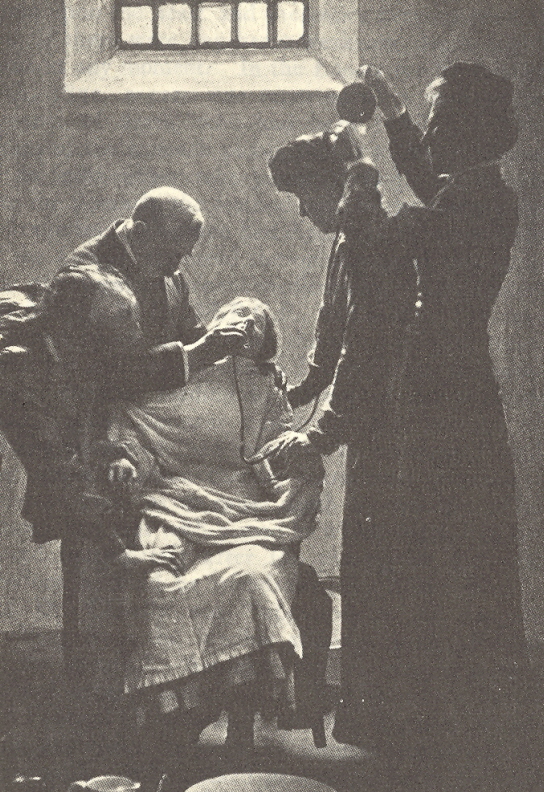
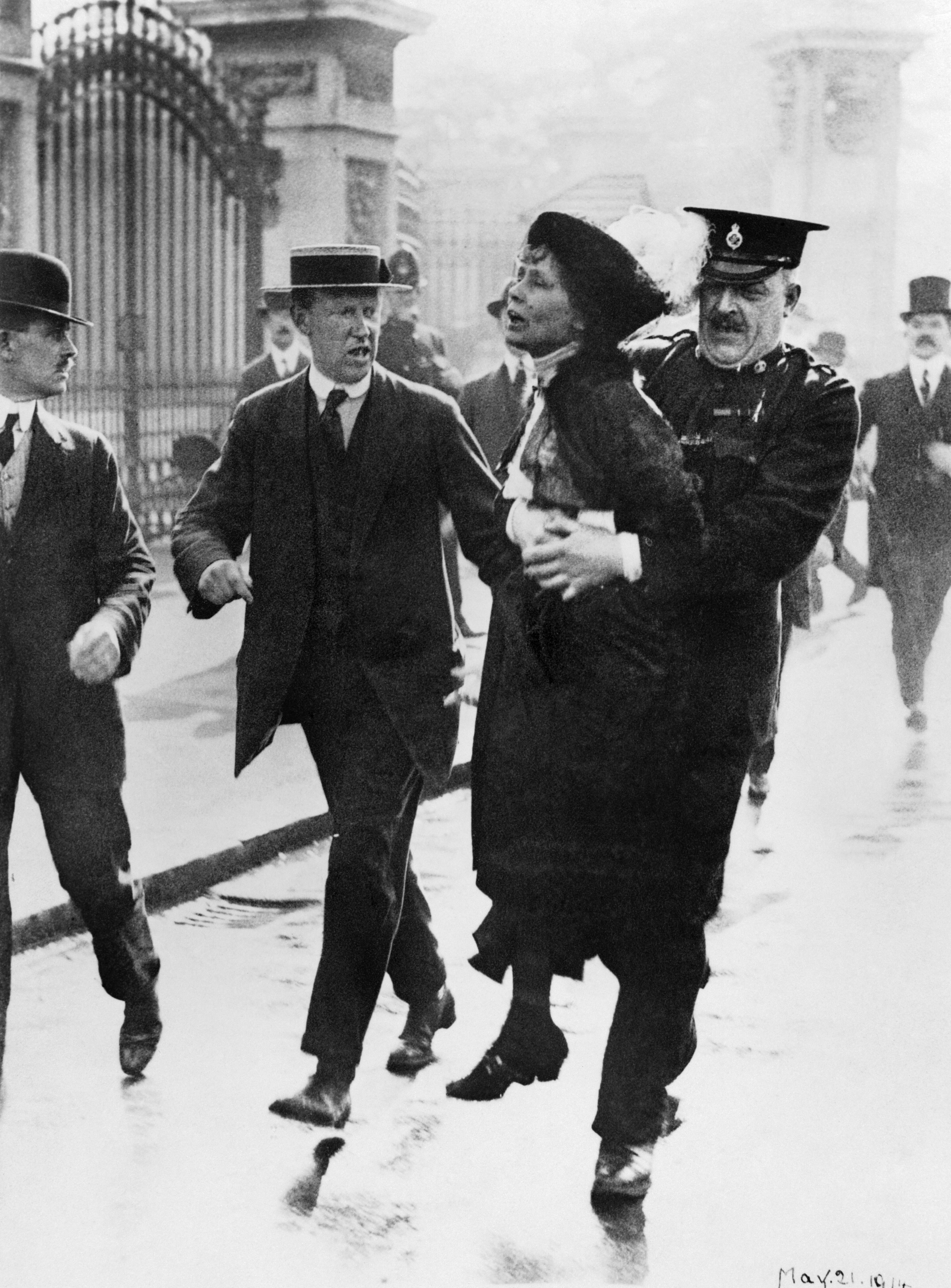
These tactics caused tension with more moderate organizations, such as the National Union of Women's Suffrage Societies (NUWSS), led by Millicent Fawcett. While Fawcett initially praised the WSPU's courage, by 1912, she condemned hunger strikes as publicity stunts and militant activists as "the chief obstacles" to suffrage. The NUWSS refused to join a march after the WSPU declined to end its support for property destruction. Fawcett's sister, Elizabeth Garrett Anderson, also resigned from the WSPU for similar reasons.
Press coverage was mixed. While many journalists noted positive crowd responses to Pankhurst's speeches, others condemned her radical approach. The Daily News urged moderation, and other outlets criticized window-smashing. In 1906, Daily Mail journalist Charles Hands coined the diminutive term "suffragette" for militant women, which Pankhurst and her allies adopted to differentiate themselves from moderate "suffragists."
The latter half of the 1900s was a period of sorrow and constant work for Pankhurst. In 1907, she sold her Manchester home and adopted an itinerant lifestyle, traveling constantly to speak and march for suffrage. This constant travel separated her from her children, especially Christabel, who had become the WSPU's national coordinator. In 1909, as Pankhurst planned a US speaking tour, her son Henry was paralyzed by spinal inflammation. Though hesitant to leave, she needed funds for his treatment. Upon her return from a successful tour, she was by Henry's bedside when he died on 5 January 1910. Five days later, she buried him beside his brother Frank in Highgate Cemetery, then delivered a speech to 5,000 people in Manchester, where even hecklers from the Liberal Party remained silent.
After Liberal losses in the 1910 elections, Henry Brailsford helped organize a Conciliation Committee for Women's Suffrage. The resulting Conciliation Bill offered a narrow but significant path to suffrage for some women, leading the WSPU to suspend militant tactics. When the bill's failure became clear, Pankhurst declared, "If the Bill... is killed by the Government, then... there is an end to the truce." After its defeat, on 18 November, Pankhurst led a protest march of 300 women to Parliament Square, where they were met with aggressive police action, an incident known as Black Friday. Her sister, Mary Jane, also present, was arrested and died shortly after her release on Christmas Day.
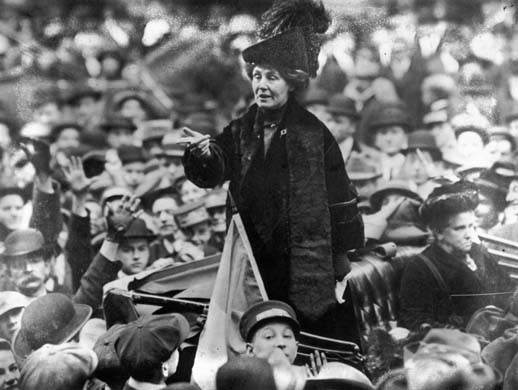
In March 1912, with a second Conciliation Bill in jeopardy, Pankhurst joined a new wave of window-smashing. Extensive property damage led to police raids on WSPU offices. Pankhurst and Emmeline Pethick-Lawrence were convicted of conspiracy. Christabel, the WSPU's chief coordinator, fled to Paris to direct strategy in exile. In Holloway Prison, Emmeline Pankhurst began her first hunger strike to improve conditions for other suffragettes, joined by Pethick-Lawrence. She was frequently released due to ill health under the "Cat and Mouse Act," but continued her protests.
In 1912, WSPU members escalated to arson. After Prime Minister Asquith visited the Theatre Royal, Dublin, suffragettes attempted an explosion, causing minimal damage. That same evening, Mary Leigh threw an axe at a carriage carrying John Redmond and Asquith. Over the next two years, women set fire to buildings in Regent's Park, an orchid house at Kew Gardens, pillar boxes, and a railway carriage. Emily Davison famously threw herself under the King's horse at the Epsom Derby in 1913, dying from her injuries, which brought significant publicity to the movement. Pankhurst supported these actions, even if not directly commanded. Other acts included inscribing "Votes for Women" on a hatchet left in the Prime Minister's carriage and burning the slogan into golf courses with acid. In 1914, Mary Richardson slashed Velasquez's painting Rokeby Venus to protest Pankhurst's imprisonment.
The WSPU's endorsement of property destruction led to significant internal divisions and departures. Emmeline Pethick-Lawrence and her husband Frederick, integral to the WSPU's leadership, were expelled by Christabel due to their opposition to volatile tactics. Around the same time, Emmeline's daughter Adela left the group, disapproving of the property destruction and advocating for a stronger emphasis on socialism. Her relationship with the family, particularly Christabel, became strained.
The deepest rift in the Pankhurst family occurred in November 1913 when Sylvia spoke at a meeting of socialists and trade unionists, supporting union organizer Jim Larkin. Sylvia had been working with the East London Federation of Suffragettes (ELFS), a WSPU branch closely tied to socialists and organized labor. Her close connection to labor groups and her appearance with Frederick Pethick-Lawrence convinced Christabel that Sylvia was organizing a rival group. The dispute became public, leading to a showdown. Sylvia later wrote that she felt "bruised, as one does, when fighting the foe without, one is struck by the friend within."
In January, Sylvia was summoned to Paris, where Emmeline and Christabel were waiting. All three were exhausted. Sylvia described Christabel as unreasonable, lecturing her for not adhering to the WSPU line: "She turned to me. 'You have your own ideas. We do not want that; we want all our women to take their instructions and walk in step like an army!'" With Emmeline's blessing, Christabel ordered Sylvia's group to dissociate from the WSPU. Pankhurst tried to persuade the ELFS to remove "suffragettes" from its name, as it was inextricably linked to the WSPU. When Sylvia refused, Emmeline wrote a furious letter: "You are unreasonable, always have been & I fear always will be. I suppose you were made so!... Had you chosen a name which we could approve we could have done much to launch you & advertise your society by name. Now you must take your own way of doing so. I am sorry but you make your own difficulties by an incapacity to look at situations from other people's point of view as well as your own. Perhaps in time you will learn the lessons that we all have to learn in life." Adela, unemployed and uncertain, also became a concern for Pankhurst, who decided Adela should move to Australia, paying for her relocation. They never saw one another again.
6. World War I and Shift in Focus
With the outbreak of World War I in August 1914, Emmeline and Christabel Pankhurst viewed the threat from Germany as a danger to all humanity, necessitating the full support of the British government. They persuaded the WSPU to immediately halt all militant suffrage activities, believing it was no time for dissent. Christabel later wrote, "This was national militancy. As Suffragists we could not be pacifists at any price." A truce was established with the government, all WSPU prisoners were released, and Christabel returned to London.
6.1. Suspension of Militancy and War Effort Support
Emmeline and Christabel redirected the WSPU's efforts towards supporting the war effort. In her first speech after returning to Britain, Christabel warned of the "German Peril" and urged women to emulate their French counterparts, who "are able to keep the country going, to get in the harvest, to carry on the industries." Emmeline actively tried to shame men into volunteering for the front lines. Some have suggested an ideological link between the feminist movement and the "white feather" movement, which shamed men who were not in uniform.
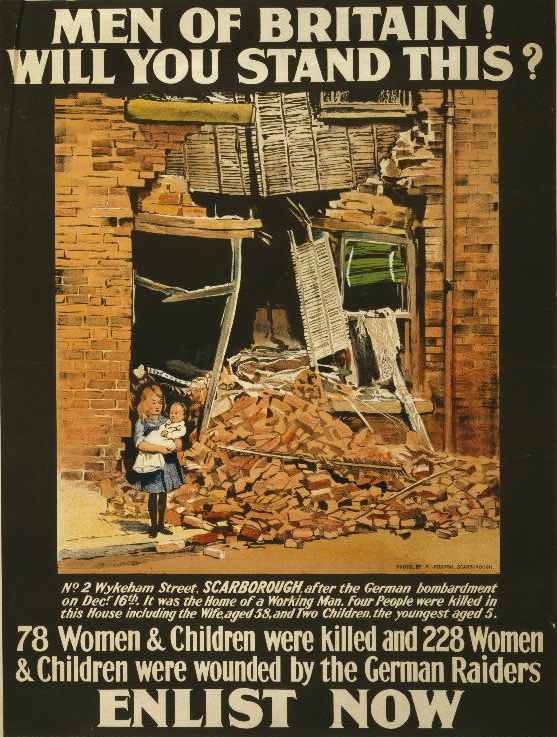
Meanwhile, Sylvia and Adela did not share their mother's pro-war stance. As committed pacifists, they rejected the WSPU's support for the government. Sylvia, from her socialist perspective, viewed the war as another instance of capitalist oligarchs exploiting poor soldiers and workers. Adela publicly spoke against the war in Australia and opposed conscription. Emmeline expressed her disapproval to Sylvia in a short letter, stating, "I am ashamed to know where you and Adela stand." She showed similar impatience with dissent within the WSPU; in October 1915, when long-time member Mary Leigh questioned her during a meeting, Pankhurst retorted, "That woman is a pro German and should leave the hall... I denounce you as a pro German and wish to forget that such a person ever existed." This sudden, rigid devotion to the government and perceived abandonment of suffrage efforts angered some WSPU members, leading to splits and the formation of groups like the Suffragettes of the Women's Social and Political Union (SWSPU) and the Independent Women's Social and Political Union (IWSPU), both dedicated to continuing pressure for women's suffrage.
Pankhurst channeled the same energy and determination she had previously applied to women's suffrage into patriotic advocacy for the war effort. She organized rallies, delivered speeches constantly, and lobbied the government to facilitate women's entry into the workforce while men were fighting overseas. Another significant concern for her was the plight of "war children"-children born to single mothers whose fathers were on the front lines. Pankhurst established an adoption home at Campden Hill that utilized the Montessori method of childhood education. Although some criticized her for aiding parents of children born out of wedlock, she insisted that the welfare of children, whose suffering she had witnessed as a Poor Law Guardian, was her sole concern. Due to a lack of funds, the home was soon transferred to Princess Alice. Pankhurst herself adopted four children, whom she renamed Kathleen King, Flora Mary Gordon (later Mary Hodgson), Joan Pembridge, and Elizabeth Tudor. They lived in London, where she had a permanent home in Holland Park for the first time in many years. When asked how she could take on the burden of raising four more children at age 57 with no steady income, Pankhurst famously replied, "My dear, I wonder I didn't take forty."
6.2. Russian Delegation
In 1916, Pankhurst visited North America with Čedomilj Mijatović, the former Secretary of State for Serbia, a nation at the center of the war's early fighting. They toured the United States and Canada, raising funds and urging the US government to support Britain and its allies. Two years later, after the US entered the war, Pankhurst returned to America, encouraging suffragettes there-who had not suspended their militancy-to support the war effort by sidelining suffrage activities. She also voiced her fears of communist insurgency, which she considered a grave threat to Russian democracy.
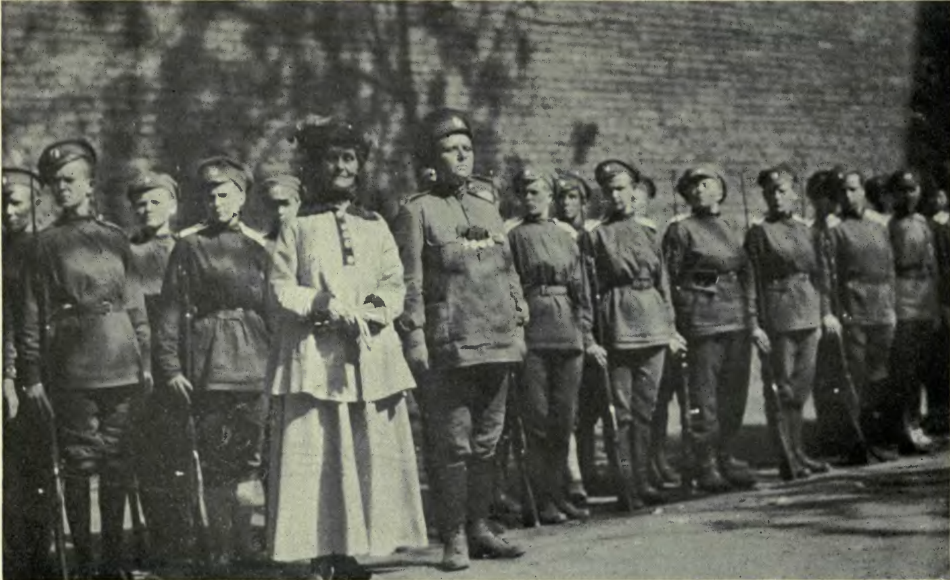
By June 1917, the Russian Revolution had strengthened the Bolsheviks, who advocated for an end to the war. Pankhurst's translated autobiography had been widely read in Russia, and she saw an opportunity to influence the Russian people. She hoped to convince them not to accept Germany's peace conditions, which she viewed as a potential defeat for Britain and Russia. UK Prime Minister David Lloyd George agreed to sponsor her trip to Russia, which she undertook in June. She told one crowd, "I came to Petrograd with a prayer from the English nation to the Russian nation, that you may continue the war on which depends the face of civilisation and freedom." Press response was divided; the left wing depicted her as a tool of capitalism, while the right praised her devout patriotism.
In August, she met with Alexander Kerensky, the Russian Prime Minister. Although she had been active with the socialist-leaning ILP in the past, Pankhurst had begun to view leftist politics unfavorably, an attitude that intensified during her time in Russia. The meeting was uncomfortable for both parties; Kerensky felt she could not appreciate the class-based conflict driving Russian policy and concluded that English women had nothing to teach women in Russia. She later told the New York Times that Kerensky was the "biggest fraud of modern times" and that his government could "destroy civilisation."
6.3. Founding of the Women's Party
Upon her return from Russia, Pankhurst was delighted to discover that women's right to vote was finally becoming a reality. The Representation of the People Act 1918 removed property restrictions on men's suffrage and granted the vote to women over the age of 30, with some restrictions. This age discrepancy was intended to prevent men from becoming minority voters due to the immense casualties of World War I.
As suffragists and suffragettes celebrated, a new schism emerged: should women's political organizations merge with those established by men? Many socialists and moderates supported unity, but Emmeline and Christabel Pankhurst believed the best hope lay in remaining separate. They reinvented the WSPU as the Women's Party, which remained open only to women. They argued that women "can best serve the nation by keeping clear of men's party political machinery and traditions, which, by universal consent, leave so much to be desired." The party advocated for equal marriage laws, equal pay for equal work, and equal job opportunities for women. However, these were post-war concerns. While the fighting continued, the Women's Party demanded no compromise in defeating Germany, the removal of anyone with German family ties or pacifist attitudes from government, and shorter work hours to prevent labor strikes. This last plank was intended to discourage potential interest in Bolshevism, about which Pankhurst grew increasingly anxious.
7. Post-War Activities and Political Evolution
In the years following the 1918 Armistice, Emmeline Pankhurst continued to promote her nationalist vision of British unity. While maintaining a focus on women's empowerment, her days of militant confrontation with government officials were over. She staunchly defended the presence and reach of the British Empire, stating, "Some talk about the Empire and Imperialism as if it were something to decry and something to be ashamed of. [I]t is a great thing to be the inheritors of an Empire like ours... great in territory, great in potential wealth... If we can only realise and use that potential wealth we can destroy thereby poverty, we can remove and destroy ignorance." For years, she traveled across England and North America, rallying support for the British Empire and warning audiences about the dangers of Bolshevism. She lived in Bermuda and America for a couple of years after the war.
7.1. Women's Party Campaigns
Pankhurst became active in political campaigning again when a bill was passed allowing women to run for the House of Commons. Many Women's Party members urged Pankhurst to stand for election, but she insisted that Christabel was a better choice. She campaigned tirelessly for her daughter, lobbying Prime Minister David Lloyd George for his support and delivering passionate speeches, even in the rain. Christabel ran in Smethwick in the 1918 United Kingdom general election, losing by a very slim margin of 775 votes to the Labour Party candidate. One biographer called it "the bitterest disappointment of Emmeline's life." The Women's Party subsequently faded from existence.

7.2. Shift in Political Allegiance
In 1926, Pankhurst joined the Conservative Party, and two years later, she ran as a candidate for Parliament in Whitechapel and St George's. Her transformation from a fiery supporter of the ILP and a window-smashing radical to an official Conservative Party member surprised many. She succinctly explained, "My war experience and my experience on the other side of the Atlantic have changed my views considerably." Biographers suggest the move was more complex, driven by her continued devotion to women's empowerment and a growing anti-communism stance. Both the Liberal and Labour parties held grudges for her WSPU activities, and the Conservative Party had a strong post-war record and a significant majority, making it a pragmatic choice to secure the vote for women as much as an ideological affinity.
7.3. Activities in Canada
As a result of her many trips to North America, Pankhurst developed a fondness for Canada, stating in an interview that "there seems to be more equality between men and women [there] than in any other country I know." In 1922, she applied for Canadian "permission to land" and rented a house in Toronto, where she moved with her four adopted children. She became active with the Canadian National Council for Combating Venereal Diseases (CNCCVD), which worked against the sexual double standard she considered particularly harmful to women. In many of her public lectures across Canada, she also promoted eugenic feminist notions of "race betterment" and often gave speeches with Emily Murphy, a prominent proponent of compulsory sterilization for the "feeble-minded." During a tour of Bathurst, when the mayor showed her a new building intended as a Home for Fallen Women, Pankhurst famously replied, "Ah! Where is your Home for Fallen Men?" However, she eventually grew tired of the long Canadian winters and ran out of money, returning to England in late 1925.
Back in London, Emmeline was visited by Sylvia, who had not seen her mother in years. Their political views had diverged significantly, and Sylvia was living unmarried with an Italian anarchist. Sylvia described a moment of familial affection during their meeting, followed by a sad distance between them. However, Emmeline's adopted daughter Mary remembered the meeting differently, recalling Emmeline silently walking out of the room, leaving Sylvia in tears. Christabel, meanwhile, had converted to Adventism and dedicated much of her time to the church. The British press sometimes highlighted the varied paths taken by the once indivisible family.
8. Illness and Death
Emmeline Pankhurst's campaign for Parliament was cut short by her declining health and a final scandal involving Sylvia. The years of relentless touring, lectures, imprisonments, and hunger strikes had taken a severe toll, leaving her fatigued and frequently ill. Even more distressing was the news in April 1928 that Sylvia had given birth out of wedlock. Sylvia named her child Richard Keir Pethick Pankhurst, honoring her father, her ILP comrade, and her WSPU colleagues, respectively. Emmeline was further shocked by a US newspaper report that "Miss Pankhurst"-a title usually reserved for Christabel-boasted of her child being a triumph of "eugenics" and advocated "marriage without legal union" as the most sensible option for liberated women. These perceived offenses against the social dignity Pankhurst had always valued devastated the elderly woman; to worsen matters, many people mistakenly believed the "Miss Pankhurst" in the headlines referred to Christabel. After hearing the news, Emmeline spent an entire day crying, and her parliamentary campaign ended with the scandal.
As her health deteriorated, Pankhurst moved into a nursing home in Hampstead. She requested to be treated by the doctor who had attended to her during her hunger strikes, whose use of the stomach pump had previously made her feel better in prison. Her nurses were concerned that the shock of such treatment would severely harm her, but Christabel felt obliged to honor her mother's request. Before the procedure could be carried out, however, Emmeline Pankhurst fell into a critical condition from which she was not expected to recover. She died on Thursday, 14 June 1928, at the age of 69.
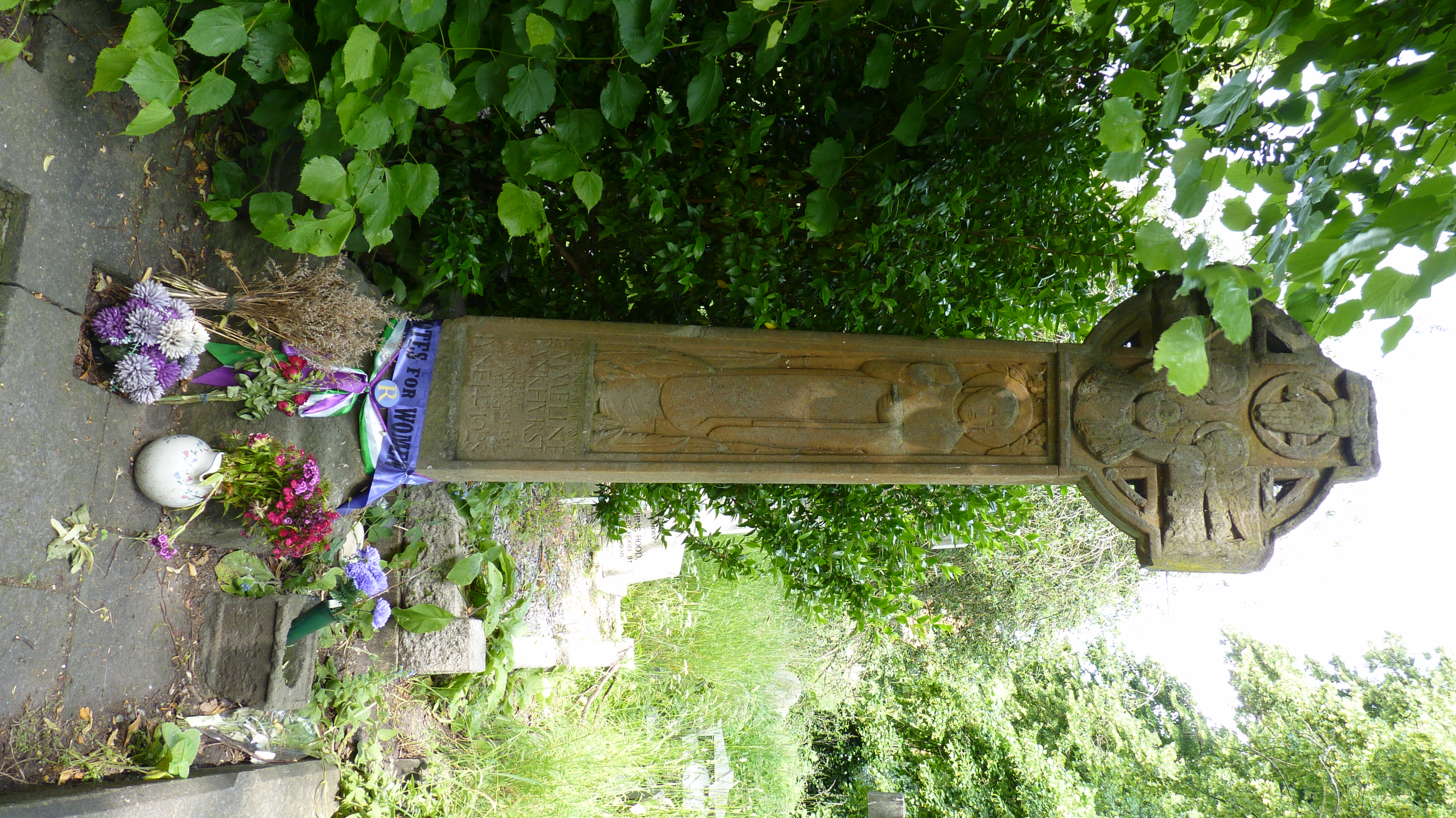
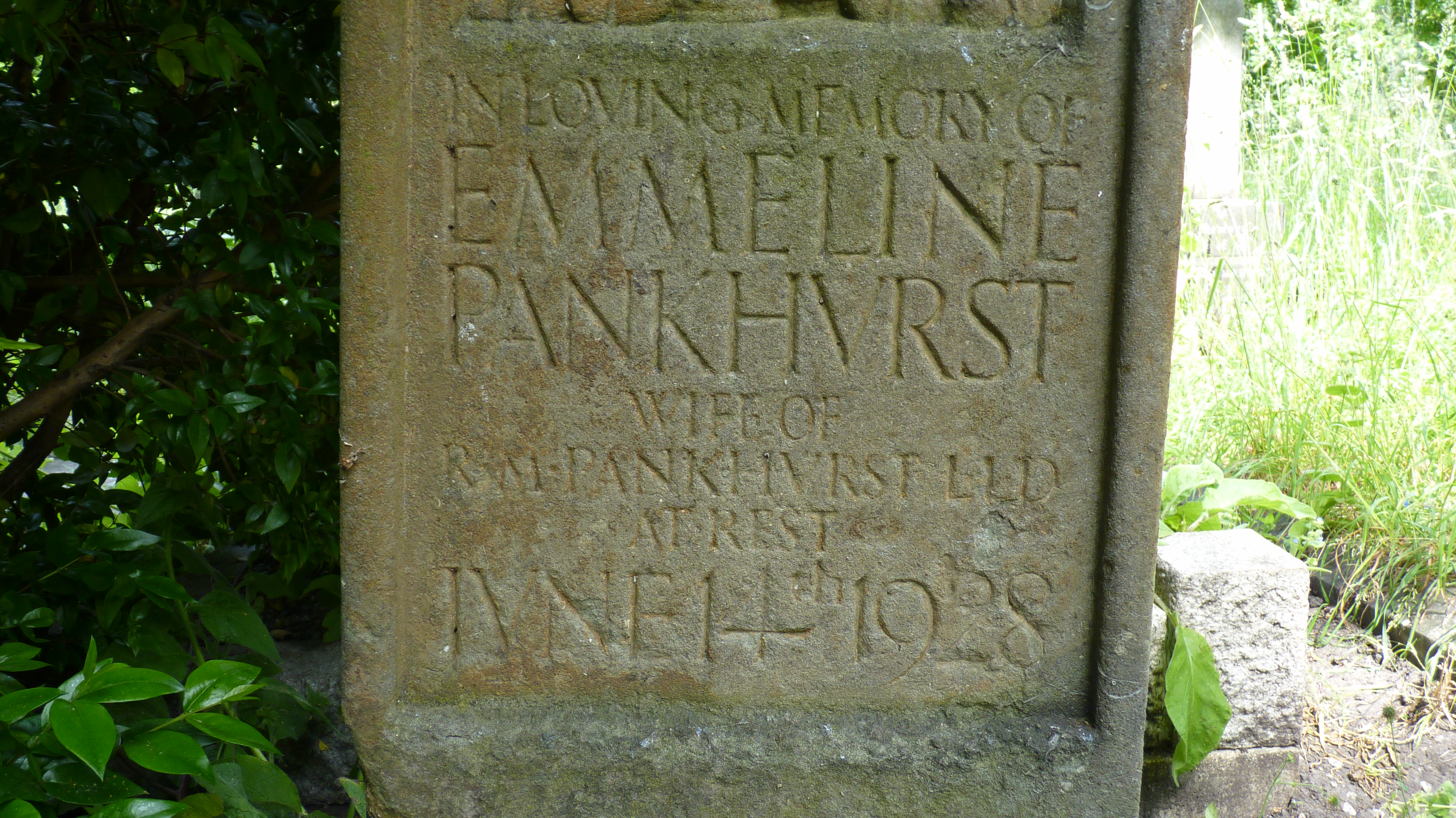
She was interred in Brompton Cemetery in London. Her pallbearers included former WSPU suffragettes such as Georgina Brackenbury, Marie Brackenbury, Marion Wallace Dunlop, Harriet Kerr, Mildred Mansel, Kitty Marshall, Marie Naylor, Ada Wright, and Barbara Wylie.
9. Legacy and Historical Evaluation
News of Emmeline Pankhurst's death was widely announced across Britain and North America. Her funeral service on 18 June 1928, was attended by her former WSPU colleagues and many who had worked alongside her. The Daily Mail described the procession as "like a dead general in the midst of a mourning army." Women wore WSPU sashes and ribbons, and the organization's flag was carried alongside the Union Flag. Christabel and Sylvia appeared together at the service, with Sylvia bringing her child, though Adela did not attend. Press coverage worldwide acknowledged her tireless work for women's voting rights, even if opinions on the value of her contributions differed. The New York Herald Tribune called her "the most remarkable political and social agitator of the early part of the twentieth century and the supreme protagonist of the campaign for the electoral enfranchisement of women."
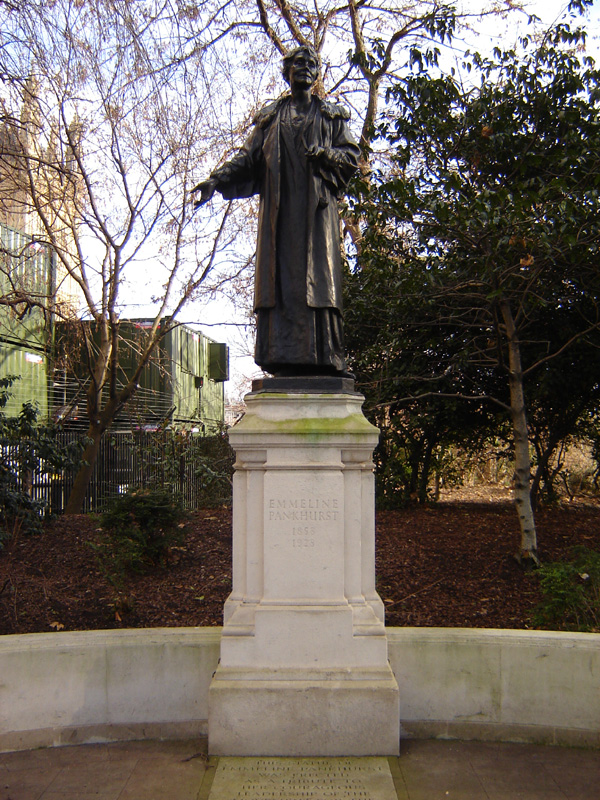
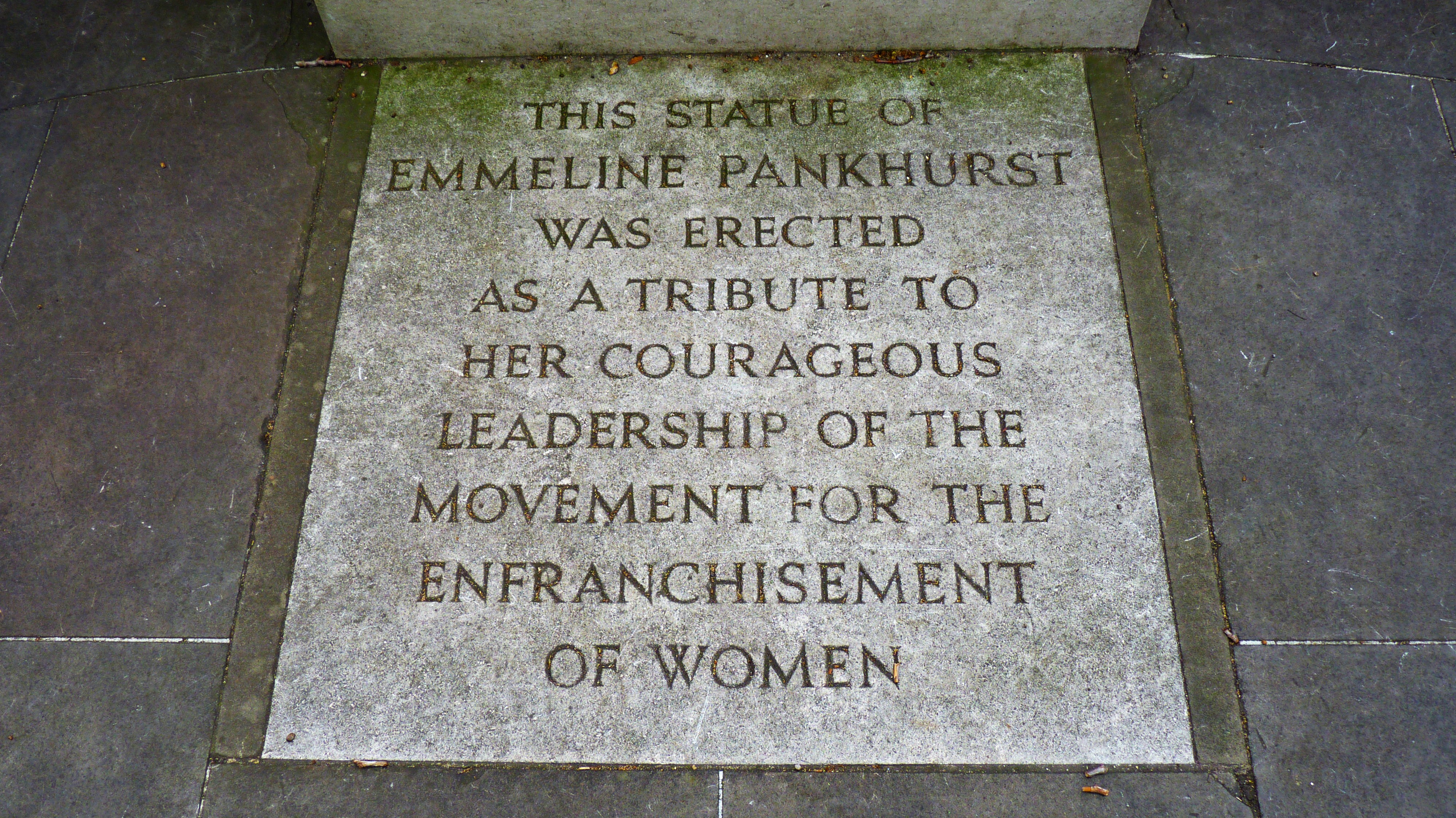
9.1. Contributions to Women's Suffrage
Shortly after the funeral, Catherine Marshall, one of Pankhurst's former WSPU bodyguards, began fundraising for a memorial statue. Her efforts culminated in the unveiling of her statue by Arthur George Walker on 6 March 1930, in Victoria Tower Gardens, adjacent to the Houses of Parliament. A crowd of radicals, former suffragettes, and national dignitaries gathered as former Prime Minister Stanley Baldwin presented the memorial to the public, declaring, "I say with no fear of contradiction, that whatever view posterity may take, Mrs. Pankhurst has won for herself a niche in the Temple of Fame which will last for all time." Sylvia was the only Pankhurst daughter present; Christabel, touring North America, sent a telegram that was read aloud. Marshall had intentionally excluded Sylvia from the planning, believing she had hastened Pankhurst's death. The statue was listed as Grade II by Historic England in 1970.
In July 2018, a proposal to move the statue away from the Houses of Parliament to Regent's University London was submitted. This proposal was withdrawn in September 2018 after widespread public anger and a campaign against it. A report commissioned by the Curator's Office at the Palace of Westminster concluded that the move would cause "substantial harm to the significance of the memorial," which was considered to have "more than special interest" due to its unique history, artistic quality, and important setting. A petition against the removal garnered over 180,000 signatures.
During the twentieth century, Emmeline Pankhurst's value to the women's suffrage movement was passionately debated, with no consensus reached. Her daughters, Sylvia and Christabel, contributed to this debate with their respective books, The Suffragette Movement (1931) and Unshackled: The Story of How We Won the Vote (1959). Sylvia's book depicted her mother's political shift during World War I as a betrayal and solidified Pankhurst's reputation as an unreasonable autocrat. Christabel's work, conversely, portrayed her mother as generous and selfless, dedicating herself to noble causes. This created a polarized discussion, and objective assessment of Pankhurst's legacy has been rare.
Recent biographies show that historians still differ on whether Emmeline Pankhurst's militancy ultimately helped or hurt the movement. However, there is general agreement that the WSPU significantly raised public awareness of the movement in ways that proved essential. Baldwin compared her to figures like Martin Luther and Jean-Jacques Rousseau, who, while not the sole architects of their movements, played crucial roles in social and political reform. Pankhurst's reformative influence manifested both intentionally and unintentionally. By defying traditional roles of wife and mother as docile companions, she helped pave the way for future feminists.
9.2. Social and Political Impact
Pankhurst's broader influence extended to feminism, social justice, and political activism. However, her later political stances and views on empire and eugenics have drawn criticism. Her advocacy for "race betterment" during her time in Canada, alongside figures like Emily Murphy who promoted compulsory sterilization for the "feeble-minded," is a notable point of contention in her legacy.
9.3. Memorials and Cultural Depictions
In 1987, one of her former homes in Manchester was opened as the Pankhurst Centre, an all-women gathering space and museum. In 2002, Pankhurst was ranked number 27 in the BBC's poll of the 100 Greatest Britons. In 2006, a blue plaque commemorating both Emmeline and Christabel Pankhurst was placed by English Heritage at 50 Clarendon Road, Notting Hill, London, where they had lived.
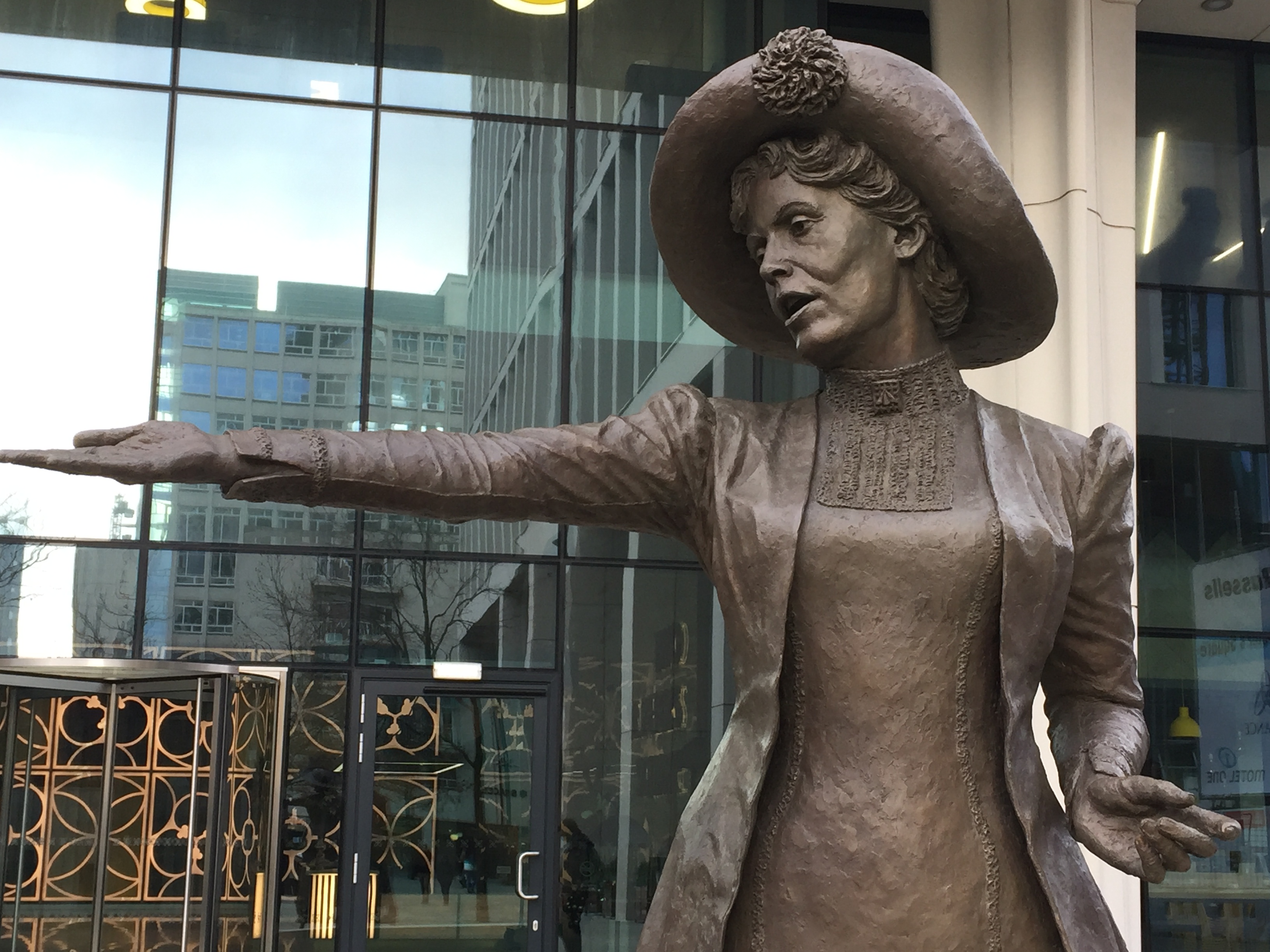
In January 2016, following a public vote, it was announced that Rise up, Women, a statue of Emmeline Pankhurst by Hazel Reeves, would be unveiled in Manchester in 2019. This made her the first woman to be honored with a statue in the city since Queen Victoria more than a century prior. The statue was unveiled on 14 December 2018, marking one hundred years since British women first gained the right to vote in the 1918 United Kingdom general election. Her name and image, along with those of 58 other women's suffrage supporters including her daughters, are etched on the plinth of the statue of Millicent Fawcett in Parliament Square, London, which was unveiled in 2018. One of the 'houses' at Wellacre Academy in Manchester is named after her.
Pankhurst has been depicted in several works of popular culture. In the 1974 BBC television miniseries Shoulder to Shoulder, she was played by Siân Phillips. In the 2015 film Suffragette, Pankhurst was portrayed by Meryl Streep.
9.4. Family Legacy
The activism and advocacy within the Pankhurst family continued through her descendants. Helen Pankhurst, Emmeline's great-granddaughter and Sylvia Pankhurst's granddaughter, is a contemporary women's rights activist. Along with her daughter, she co-founded Olympic Suffragettes, an organization that campaigns on various women's rights issues.